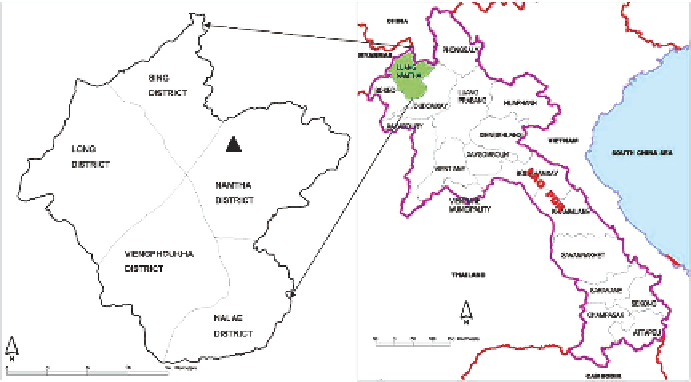Agriculture Reference
In-Depth Information
development in other countries such as Malaysia and Thailand, and the adaptation
of this technology to higher latitudes and altitudes on estates (collective and state
farms) in southern China. For Laos to move into the (late) agricultural transformation
stage will require further economic growth, more extensive government support,
and the development of improved and locally adapted rubber technologies.
5.3
The Case Study Village
Hadyao is situated in Namtha District of Luangnamtha Province around 2 km from
the district centre and near the main road to the Chinese border (Fig. 5.1). The vil-
lage was established in 1975. The first residents were Lao Soung (Hmong) from
Oudomxay Province who at first settled in the mountains above the present village
site, practising shifting cultivation and opium growing. Two years later they moved
down in search of lowland paddy areas. In the first year there were 55 households
with a population of 587. From 1975 to 1980, nearly 150 people, mainly children,
died of malaria and lack of adaptation to the lowland environment. Many returned
to live in the mountains, leaving only 17 households. Then, in 1985, with the encour-
agement of the district authority, people again started to move down to Hadyao and
reconstruct the village, build a school, cooperative, and a state commercial shop,
practising group paddy cultivation, and managing livestock grazing areas.
In 1994, 14 Hmong households from China migrated to Luangnamtha Province
and requested to live in Hadyao where they had relatives. These people introduced
rubber cultivation to the village because they had over 15 years of experience
Fig. 5.1
Location of Hadyao village in Namtha district of Luangnamtha province (GIS Unit of
NAFRI, 2005)

Search WWH ::

Custom Search